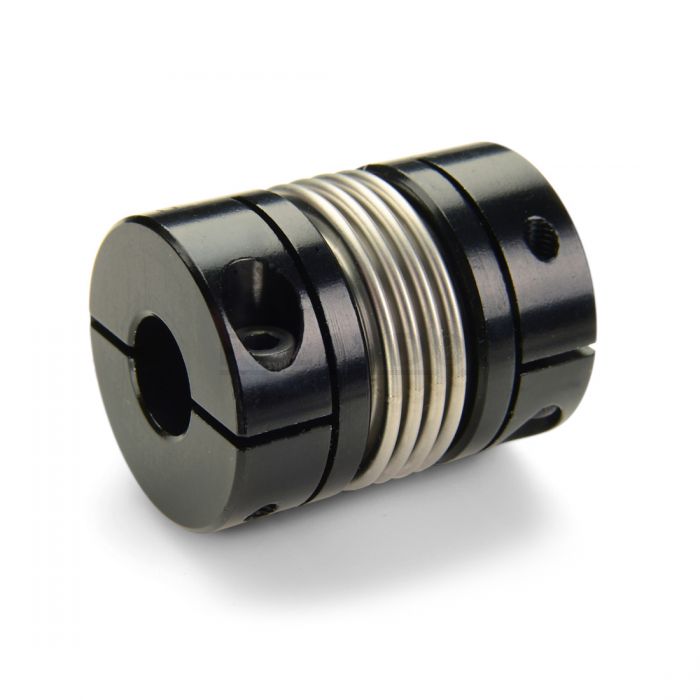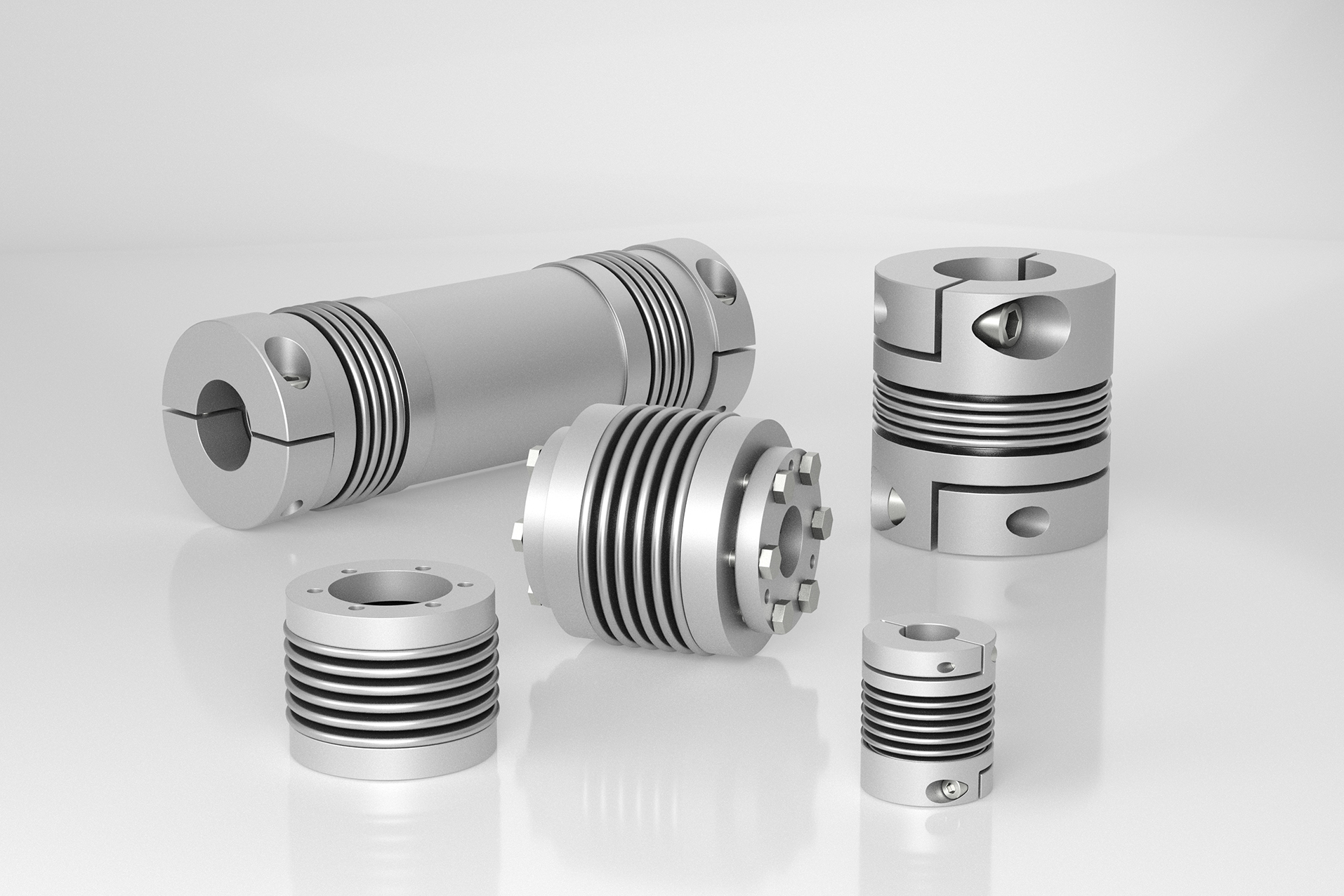Product Description
Flexible Double Disc Coupler K17 Mechanical Seal Dry Gas Seal Rotary Joint Metal Bellows Diaphragm Coupling
FEATURES
1.Power to weight ratio high
2.Accommodates angular and axial misalignments
3.High temperature application
4.Visual inspection is possible without dismantling equipments
5.Low axial stiffness with high torsional rigidity
6.High-speed capacity
7.Range up to 12000 Nm
8.Added advantage of stretch fitted shim pack
Application:
1. Printing machinery / Packing machinery / Wood-working machinery etc large-scale mechanical equipment
2. Repair replacement
Company Information:
/* March 10, 2571 17:59:20 */!function(){function s(e,r){var a,o={};try{e&&e.split(“,”).forEach(function(e,t){e&&(a=e.match(/(.*?):(.*)$/))&&1

Can Bellows Couplings Handle Angular and Parallel Misalignments Simultaneously?
Bellows couplings are designed to handle both angular and parallel misalignments simultaneously, making them versatile for various mechanical power transmission applications. The bellows element, typically made of a thin-walled metal structure, allows for flexibility in multiple directions, enabling the coupling to accommodate different types of misalignments.
1. Angular Misalignment: Angular misalignment occurs when the driving and driven shafts are not collinear and form an angle with each other. This type of misalignment can happen in applications where the shafts are not perfectly aligned due to assembly errors, shaft deflection, or thermal expansion. The bellows coupling’s design allows it to flex in response to angular misalignment, transmitting torque smoothly without inducing additional stress on the connected components.
2. Parallel Misalignment: Parallel misalignment, also known as lateral misalignment, happens when the axes of the driving and driven shafts are parallel but not concentric. This misalignment may occur due to inaccurate alignment during installation or shaft deflection under load. The bellows coupling’s flexible bellows element can also compensate for this type of misalignment, ensuring that the shafts remain parallel enough to prevent excessive forces and vibrations.
Simultaneous Misalignments: Bellows couplings are unique in their ability to handle both angular and parallel misalignments simultaneously. As the bellows element flexes in multiple directions, it can compensate for misalignments in both planes without imposing significant side loads on the shafts or bearings. This capability makes bellows couplings well-suited for precision motion control systems, where maintaining accurate alignment is crucial to ensure smooth operation and longevity of the equipment.
It is important to note that while bellows couplings can handle a certain degree of misalignment, excessive misalignments should be avoided to prevent premature wear and reduce the efficiency of the coupling. Regular maintenance and inspections can help identify and correct misalignment issues early, ensuring optimal performance and extended service life of the bellows coupling and the entire mechanical system.

How do Bellows Couplings Compare to Other Coupling Types, such as Flexible or Rigid Couplings?
Bellows couplings offer distinct advantages and characteristics that set them apart from other coupling types, such as flexible and rigid couplings. Here is a comparison of bellows couplings with other coupling types:
- Flexibility: Bellows couplings are a type of flexible coupling. They provide excellent angular and axial misalignment compensation while maintaining a high level of torsional rigidity. This flexibility helps to reduce stress on connected equipment and allows for smooth operation even in misaligned conditions.
- Compensation for Misalignment: Flexible couplings, including bellows couplings, can accommodate both angular and parallel misalignments. They are designed to allow a certain degree of relative movement between shafts, which helps prevent damage to shafts and connected equipment due to misalignment or vibration.
- Compactness: Bellows couplings are compact and lightweight, making them suitable for applications where space is limited. The absence of additional components, such as elastomeric elements found in other flexible couplings, contributes to their compact design.
- Torsional Stiffness: Compared to some other flexible couplings, bellows couplings offer higher torsional stiffness. This characteristic ensures efficient torque transmission and precise motion control, making them suitable for applications demanding high torsional rigidity.
- Backlash: Bellows couplings typically have minimal backlash due to the absence of mechanical play or components that can introduce free movement. This characteristic allows for precise positioning and control in motion systems.
- Electrical Isolation: Unlike rigid couplings, bellows couplings provide electrical isolation between shafts, making them ideal for applications where electrical continuity must be maintained or avoided between the connected components.
- Resonance Damping: Bellows couplings can help dampen vibrations and reduce resonance in rotating equipment. This characteristic contributes to smoother operation and prolongs the life of connected components.
On the other hand, rigid couplings are suitable for applications requiring precise shaft alignment and no flexibility. They provide a solid and direct connection between shafts, ensuring efficient torque transmission without any loss due to misalignment. However, rigid couplings cannot compensate for misalignment and are more prone to stress concentration in case of shaft misalignment or vibrations.
While flexible couplings, including bellows couplings, offer misalignment compensation and flexibility, they may have slightly lower torsional stiffness compared to rigid couplings. However, their ability to handle misalignments and provide damping characteristics often outweigh this consideration in many motion control applications.
In summary, bellows couplings combine flexibility, torsional stiffness, electrical isolation, and vibration damping features, making them a versatile choice for various precision motion control applications.

What is a Bellows Coupling, and How is it Used in Mechanical Power Transmission?
A bellows coupling is a type of flexible coupling used in mechanical power transmission systems to connect two shafts while allowing for angular misalignment, axial motion, and torsional flexibility. It consists of a thin-walled metallic bellows element that resembles an accordion or bellows, which gives the coupling its name. The bellows is typically made of stainless steel, providing it with the necessary flexibility and durability for various applications.
When used in mechanical power transmission, a bellows coupling accommodates misalignments between the connected shafts. These misalignments can be in the form of angular misalignment, where the shafts are not perfectly aligned in a straight line, or axial misalignment, where there is some linear movement along the shaft axis. Additionally, the bellows element provides torsional flexibility, allowing the coupling to transmit torque while compensating for slight shaft misalignments.
The bellows coupling works by absorbing and redistributing the misalignment forces through the flexing of the bellows element. As the shafts rotate, any misalignment causes the bellows to flex, allowing the coupling to maintain a continuous transmission of torque while reducing stress on the connected shafts. This flexibility also helps dampen vibrations and shock loads, protecting the connected components from excessive wear and fatigue.
One of the significant advantages of using a bellows coupling is its high torsional stiffness. The bellows element provides excellent torsional rigidity, making it suitable for applications where precise motion control and minimal torsional backlash are essential.
Bellows couplings find applications in various industries, including robotics, aerospace, medical devices, semiconductor manufacturing, and precision machinery. They are commonly used in applications where accurate positioning, high torque transmission, and compensating for misalignments are critical requirements.
In summary, a bellows coupling is a flexible and robust coupling solution that allows for angular misalignment, axial motion, and torsional flexibility in mechanical power transmission systems. Its ability to accommodate misalignments while maintaining high torsional stiffness makes it a preferred choice in precision positioning and motion control applications.


editor by CX 2024-02-16
